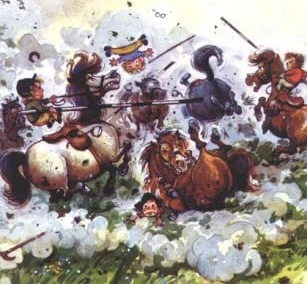How busy is busy, how big is the arena, and how many beginner lessons in a row do you do.
When it was winter I capped total number of riders in the indoor arena (just slightly bigger then 20x40m) with the very very beginners- I closed the arena to others but was very clear on posted times when that arena occurred and was very strict on beginning and ending on time for the ones I shut arena down for. I did post my lessons and approximate ability- that let others know what lessons should be easier to ride around. I also posted if they were jumping- if we jumped I asked people to hack in the first 30min when we were flatting or doing basic rail/cavaletti work.
Eventually I got sick of having to manage not only my riders, but everyone else. It’s intimidating and unsafe for the beginners (who you are responsible for) and I know I hated if I had to try to ride around other beginner lessons. When I knew the other instructor had beginner lessons I avoided the arena like the plague.
Got burnt out doing factory lessons and left the barn- it didn’t want to work with me to organize times, and it was so booked in evening/weekends, none of the boarders could hack. This was causing a lot of grief on all ends.
I’ve since worked in much bigger sized arenas, with smaller groups, that I I’ve shared with hacking riders. It’s clearly posted lessons take priority, and the barn manager ensures that there are spaces where no lessons are booked to allow people to hack. That greatly reduces the amount of people in the arena for lessons… because really it’s no fun riding around one.
It can be done in small busy barns, but I can’t say it’s fun for anyone.

